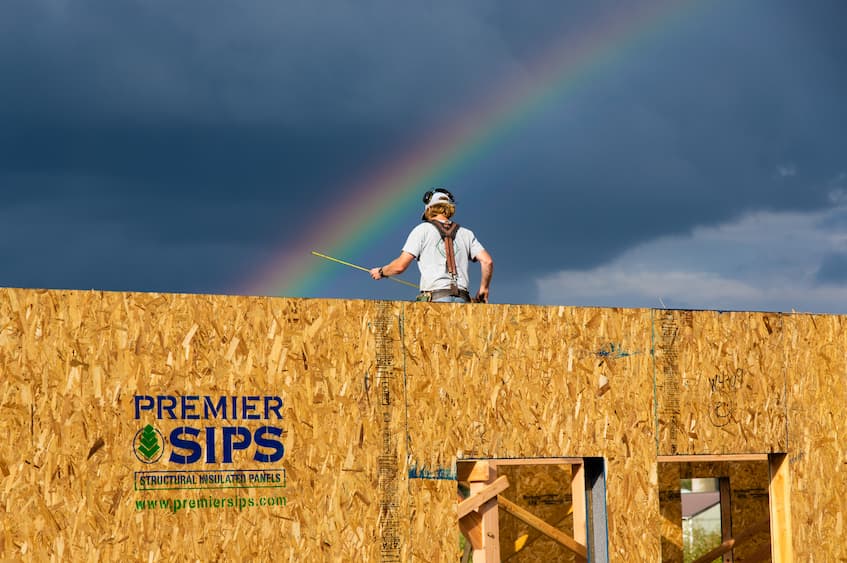
What are SIPs you might be wondering?
The short answer: Structural. Insulated. Panels.
SIPs are wall, roof (and sometimes floor) panels. Fabricated from a slab of foam sandwiched between two OSBs (oriented strand board).
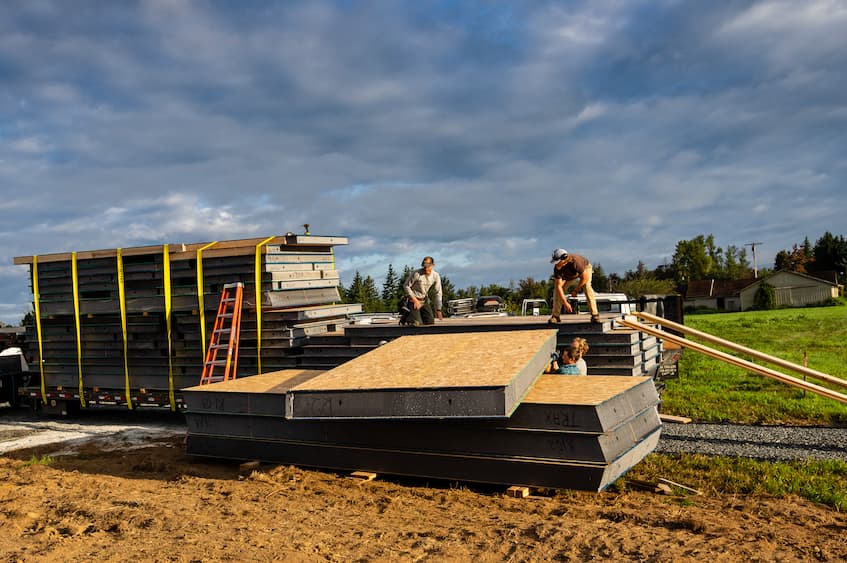
The sandwich-panels can be up to 24’x8’ and are made in the SIPs factory, in our case Premiere-SIPs in Puyallup or Insulspan in British Columbia. The doors and windows are cut-out in the factory, a stack of pre-fabricated house panels are loaded onto a trailer and arrives on-site where the SIPs are assembled… a bit like Legos.
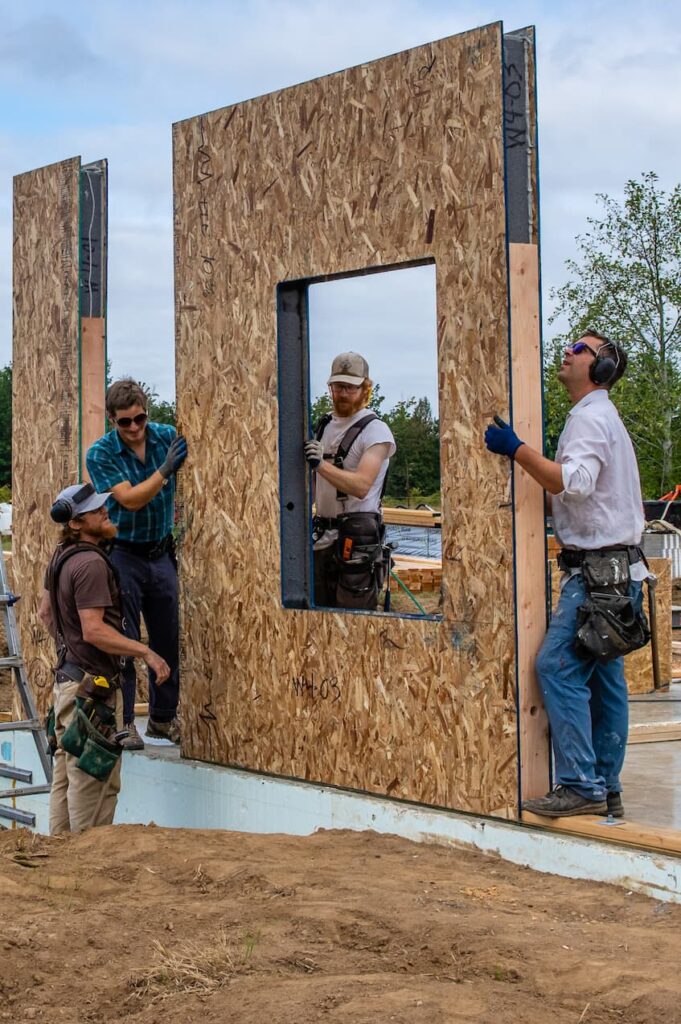
Because Powerhouse designs affordable Net Zero energy houses and our sister company TC Legend Homes builds them, the TC crew is able to assemble the wall panels by hand (and strong arms). A crane can be used for walls where needed but we try to design homes that won’t require a crane for the walls to keep costs lower. A crane is used to set to thicker, heavier roof panels.

Our goal with SIPs panels is to create a continuous foam box surrounding the inside of the home. In total there’s 4” foam under the concrete slab, the 6” foam walls and a 10” foam roof trapping all the heat inside the house.
The ‘S” in ‘SIP’ stands for structural. The panel-system carries the load of the house, floors and roof, and does not need the sticks of vertical lumber you see in the walls of a conventionally framed house.
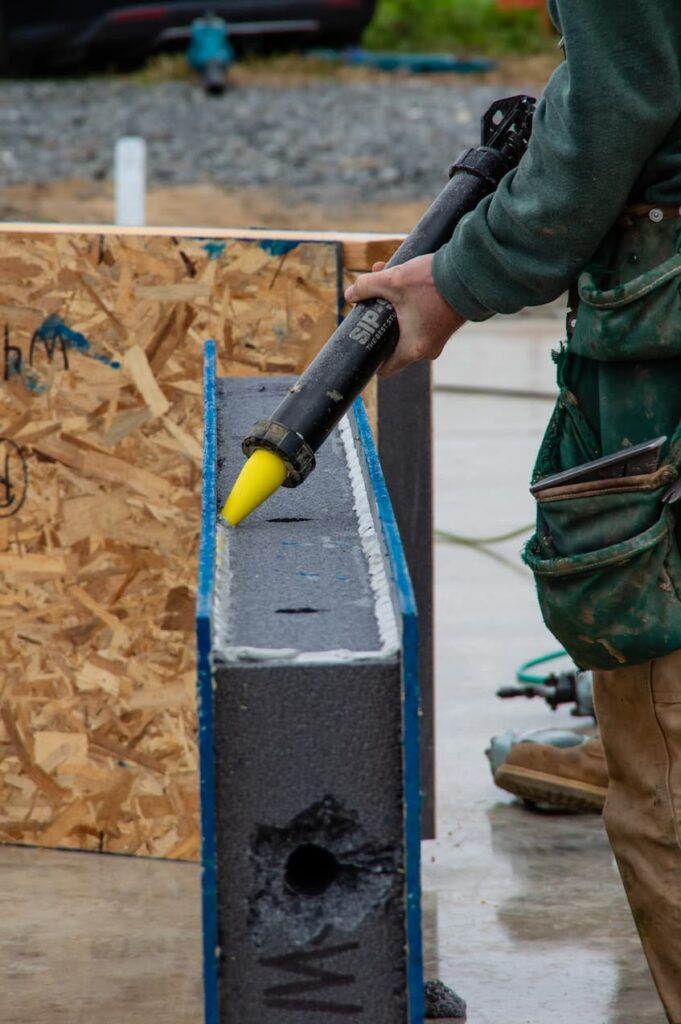
How are SIP panels joined? We’ll use the walls as an example:
The SIPs panels typically have the interior foam held-back to form a 1.5” gap at the panel edges. Two panels are joined by setting a ‘spline’ into the recessed gap on one panel, then sliding the second panel over the spline, nailing the connecting spline in place through all four edges. Splines can be made of 2×6 lumber (L-spline), foam mini-SIPs (called S-splines), or an insulated TJI spline (called an I-spline).
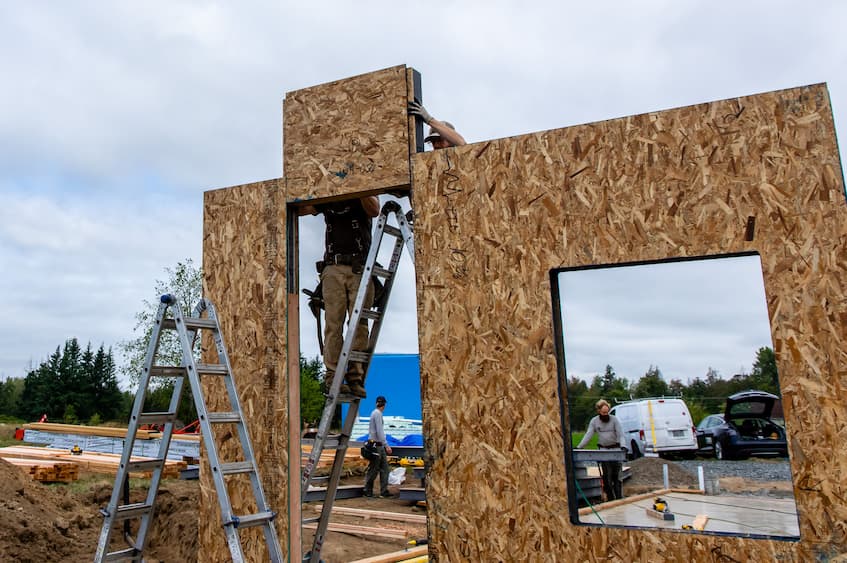
Because a 2×6 lumber splines touches both the warm inside of the house wall, and the cold exterior of the house wall, they are said to cold-bridge. A cold-bridge creates a poorly insulated pathway for the warm inside energy to travel to the cold exterior. There a many cold-bridges in conventional framing and that’s why we don’t do it. We aim to minimize L-splines as they have an insulating value of R7.8, compared to R29 for our Neopor graphite foam 6.5” Premiere SIPs wall panels.
On average it takes the TC crew about (2) days to assemble the 1st floor SIP wall panels. The 2nd floor-level TJI and sheeting floor system are built over the succeeding (2) days. The upper level walls take a day or so, and then it’s roof-day!
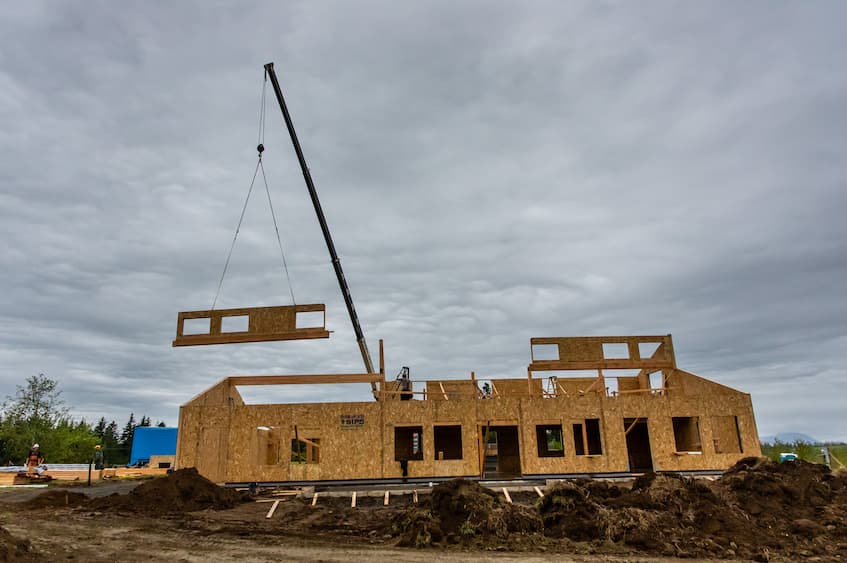
On roof-day the crane arrives early, and the roof panels are rigged, swung up, and screwed in-place by Ted and Norm. The TC crew have pre-assembled the boundary supports, so we don’t use more crane time and belch more diesel than necessary. The boundary support is a continuous 2×10 that seats into the 1.5” perimeter recess & connects together the outside edge of the roof panels.
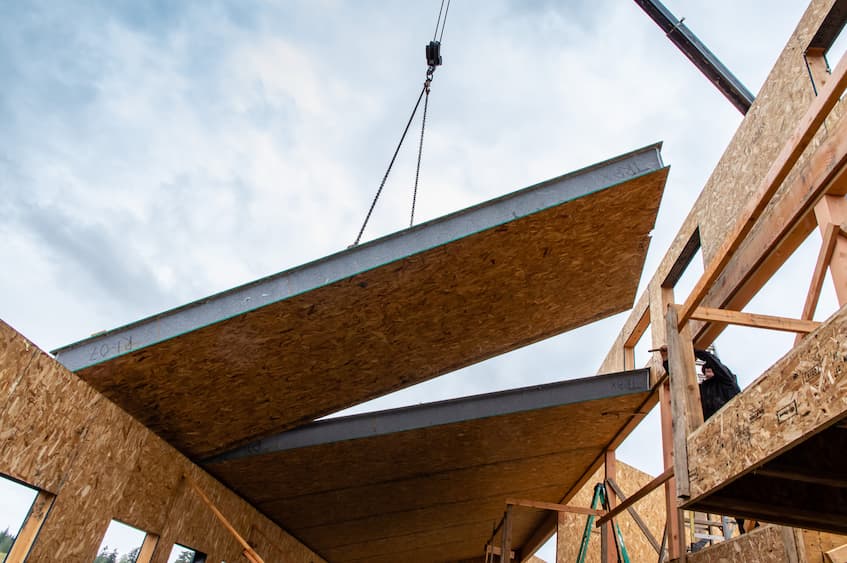
SIPs are very fast to assemble and incur almost no waste material onsite because everything arrives pre-cut. Most excess off-cut foam is recycled back into the process during factory fabrication and the manufacturer software nests the required panel shapes for maximum efficiency, making SIPs more streamlined, more profitable and more environmentally responsible.
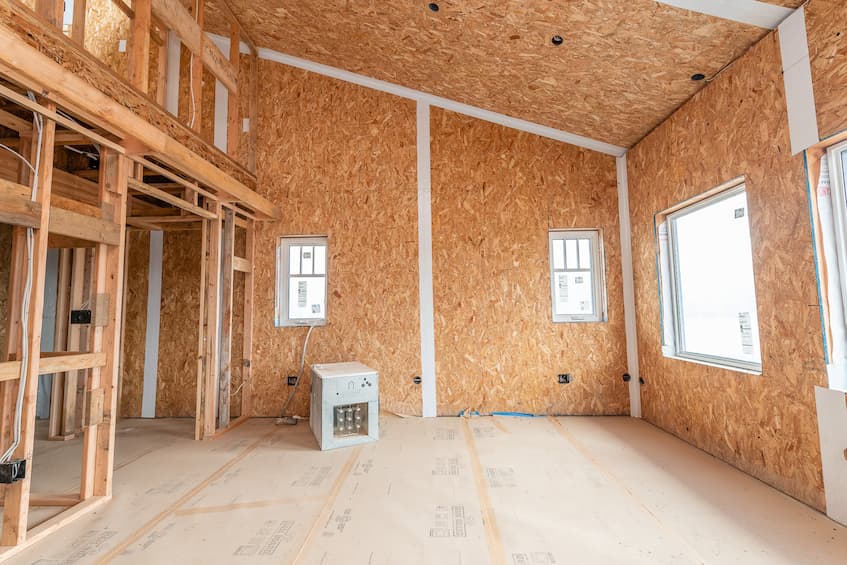
Air sealing is very, very important for energy efficiency.
Imagine a fast, cold wind blowing over the building and all the warm air streaming out through the construction cracks. The Larson Home is modeled to need a maximum of 10,000Btu/ hour to heat in midwinter, if we air-sealed the envelope to 0.6 air-changes per hour. (Note: (1) air-change-per hour assumes the entire volume of the house has the air replaced once within (1) hour).
If we air-sealed the Larson Home to 5.0 air changes per hour, code minimum, we’d need 14,600Btu/h of heating for midwinter! So you can see that air sealing to reduce the air-changes per hour can give over 46% reduction in heating load in a house like this.
SIPs are a pre-sealed sandwich, and compared to typical construction there are far fewer construction-joints in a SIPs building due to the large SIPs panel size. The standard SIPs assembly process includes installing beads of specialist mastic to air-seal and adhere the panels to each-other. SIPs have a measurable dollar advantage with that high level of pre-sealing and easy panel-to-panel air sealing. Meaning you can buy and run a smaller heat pump. And we haven’t yet examined the standard R29 insulation in the equivalent 2×6 wall!
If you have questions about SIPs, or would like to start designing your new home, contact us here!
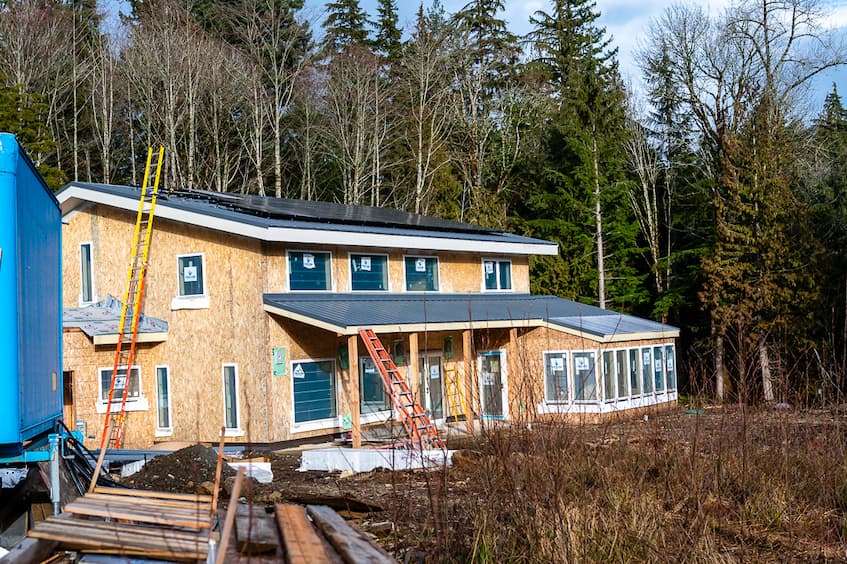
Edited by Nicole Miller
